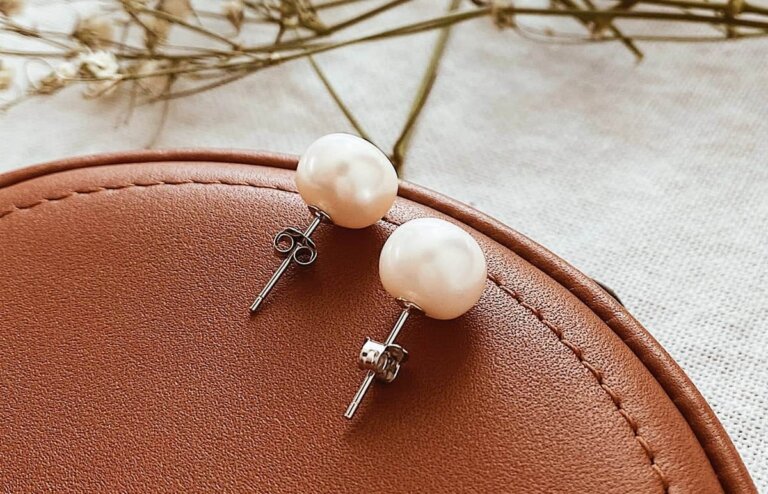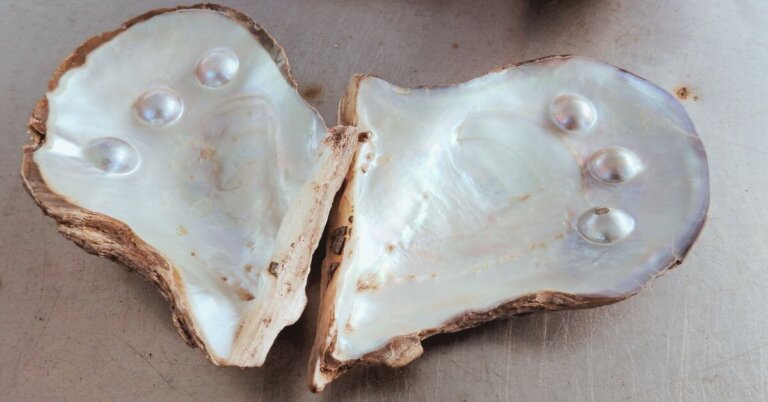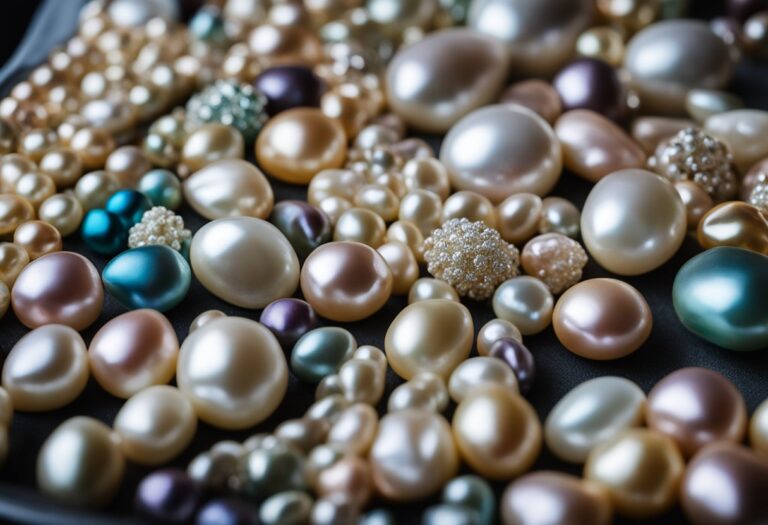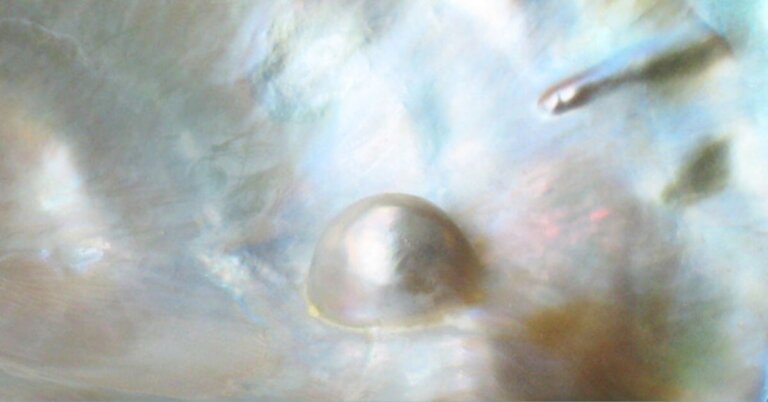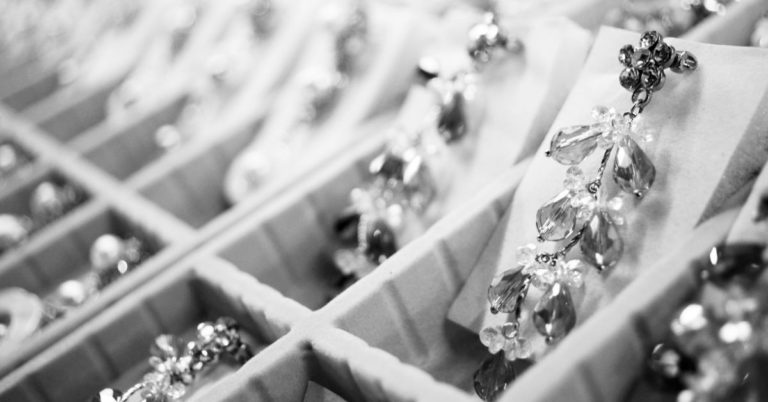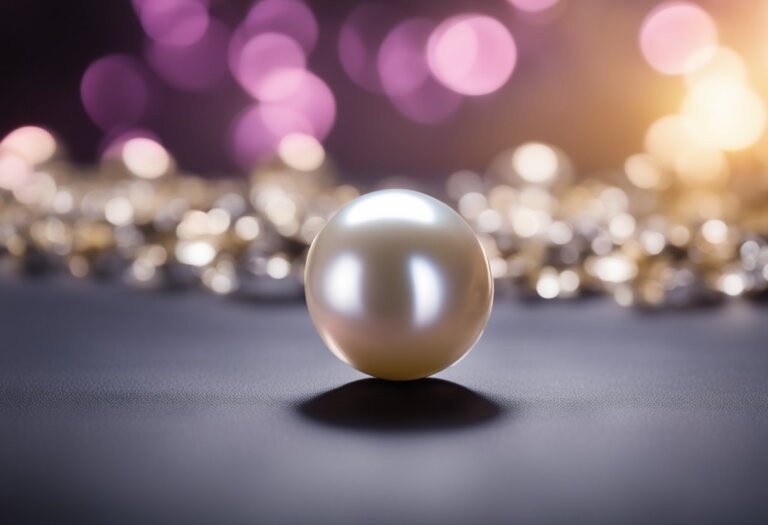Seed Pearls: Complete Buyer’s Guide
Seed pearls are tiny gems that have adorned jewelry for centuries. Ranging in size from a mere millimeter to just over two millimeters in diameter, they’re known for their delicate beauty and are often used in fine jewelry designs.
Historically, they’ve been a symbol of wealth and elegance, especially during the Victorian era when they were commonly used to decorate clothing, accessories, and as intricate accents in hair ornaments and brooches.

When you’re considering seed pearl jewelry, understand that their small size demands expert craftsmanship. This ensures that each pearl is securely set, maintaining the piece’s intricate design and structural integrity.
Seed pearls require a gentle touch, both in their setting and care, making pieces that feature them as much an investment in craftsmanship as in materials.
In terms of variety, seed pearls can be either natural or cultured.
- Natural seed pearls are extremely rare and are found in the wild, making them highly valuable.
- Cultured seed pearls, on the other hand, are a more common and accessible choice.
They are produced with human assistance, offering a broader range of options for your pearl jewelry collection.
Whether used in a classic strand bracelet or as elaborate as a Victorian-inspired brooch, seed pearls add a touch of grace and sophistication to your jewelry ensemble.
History and Origin of Seed Pearls
Seed pearls are small, naturally formed pearls highly prized throughout history. You’ll discover their significance in past fashion eras and how they’ve been incorporated into jewelry designs over centuries.
Georgian and Victorian Influence
In the Georgian and Victorian eras, seed pearls became synonymous with sophistication and status. Antique seed pearl jewelry during this period was handcrafted with meticulous care.
Seed pearls were often used to enhance mourning jewelry, symbolizing tears and worn as a tribute to lost loved ones.
Edwardian and Art Nouveau Styles
Moving into the Edwardian era, the style shifted towards more delicate and refined designs, with seed pearls playing a substantial role.
Art Nouveau jewelers embraced these diminutive gems, incorporating them into intricate, nature-inspired pieces. The whiplash curves and flowing lines typical of this period often featured seed pearls, enhancing the organic aesthetic.
Revival of Seed Pearl Jewelry
In more recent years, the charm of seed pearl jewelry has experienced a resurgence. Modern craftsmen and collectors alike admire Victorian seed pearl pieces, sparking renewed interest and production.
Natural seed pearls are especially cherished for their rarity and are featured in contemporary pieces that echo the intricacy of past designs.
Characteristics and Types of Seed Pearls

Seed pearls are small, ranging from tiny specks to just over 2 millimeters, and they carry a unique allure that has been cherished for centuries.
Natural vs Cultured Seed Pearls
Natural seed pearls are formed accidentally as a byproduct of a pearl-producing mollusk.
They often have an organic, asymmetrical shape due to their random creation without human intervention.
In contrast, cultured pearls involve human intervention where a nucleus is inserted into a mollusk to stimulate pearl production, leading to more standardized sizes and shapes.
Size and Selection Criteria
Your selection of seed pearls should be based on size consistency and overall quality. These pearls are generally very small, typically under 2 millimeters.
Tiny pearls require careful selection; look for a lustrous surface and uniformity for stringing on jewelry.
Shapes and Colors Variations
Seed pearls offer a variety of shapes, from near-round to baroque. You will find them in a spectrum of colors—whites, pinks, creams, and more.
Natural seed variations possess their own unique hues, while freshwater pearls can be dyed to achieve a range of shades, diversifying your selection.
Craftsmanship and Design

Seed pearls, prized for their delicate beauty, are often used in intricate jewelry designs that require skillful artisanship. The crafting process of these minute pearls into jewelry is meticulous, involving precision and creativity.
Intricacies in Seed Pearl Jewelry Making
Seed pearls demand an exceptional level of precision from jewelers. Each seed pearl must be carefully selected and matched for uniformity in color and size, creating a harmonious appearance.
The stringing process is intricate: pearls are typically strung on fine silk threads, a technique requiring steady hands and patience. Handmade pieces from our jewelry collections testify to the level of craftsmanship involved.
Common Jewelry Pieces Featuring Seed Pearls
- Seed pearl necklace: A classic item, often seen in several styles, from chokers to longer strands.
- Seed pearl earrings: Delicate and subtle, these can range from simple studs to ornate drops.
- Seed pearl pendants and rings: Small yet impactful, these pieces make a statement of elegance.
- Victorian brooches: Embellished with seed pearls, these antique pieces reflect the grandeur of an era.
- Wedding jewelry: Incorporating seed pearls, for a touch of vintage charm.
Pairing Seed Pearls with Other Gemstones
Seed pearls complement many gemstones, enhancing their allure:
- Sapphire and seed pearl: This regal combination is often found in heirloom pieces.
- Amethyst and seed pearl pendant: A blend of purple hues and creamy pearls exudes sophistication.
- Onyx and seed pearl: A contrast between the dark stone and the light pearls creates a striking effect.
The versatility of seed pearls allows for various pairings that can suit personal tastes and styles while adding an element of refined craftsmanship to any jewelry piece.
Care and Maintenance of Seed Pearl Jewelry

Seed pearls are delicate in nature. Their maintenance necessitates a gentle, precise approach. Always handle your seed pearl jewelry with care. Avoid contact with abrasive materials. These pearls can scratch easily.
When cleaning, use a soft, damp cloth. Mild soap is optional. Never soak seed pearl jewelry. Water exposure can weaken the silk threads holding the pearls together.
Store your seed pearls separately. Other jewelry may damage them. They’re best kept in a soft pouch or lined jewelry box.
Regulate exposure to extreme temperatures. Sudden changes can affect the nacre of a cultured pearl in a mollusc. The stable conditions help preserve their luster.
Avoid chemicals. Cosmetics, hairspray, and perfumes can dull the pearls’ sheen. Put your jewelry on last when dressing. This minimizes the chance of contact with harmful substances.
Regular check-ups are recommended. This ensures the integrity of the strand. The formation of a cultured pearl requires time and nurturing. Your maintenance should reflect the same care.
Review Usage:
- Clean: Soft cloth, little water, optional mild soap.
- Store: Separate, in soft material.
- Protect: No harsh chemicals, minimal water exposure.
Remember, pearls require ongoing attention. Rotating between pieces reduces wear on your seed pearl jewelry. With proper care, these treasured items will last for generations.
- Freshwater Pearl Symbolism and Spiritual Meaning: Unveiling Mystical Associations
- How to Choose The Best Earrings for Your Face Shape (with Pictures and Celebrities)
- Earrings Styles: Popular Types of Earrings with Pictures
- Freshwater Pearl vs Cultured Pearl: Unraveling the Mysteries
- Cultured Pearls: Real and Elegant Gem At Affordable Price

